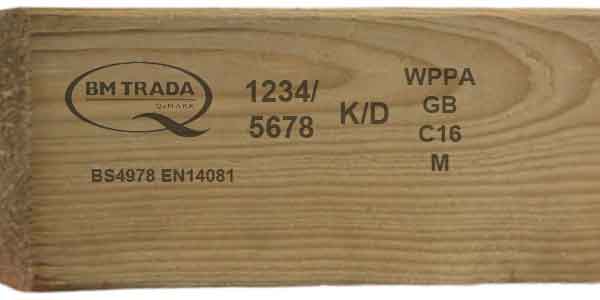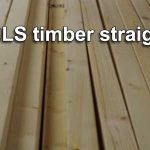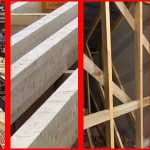In this article, we will be looking at whether graded timbers, such as C16 and C24 can be used outside. We will look at what these grades mean, and also what is required for timber to be used outside.
Timber grades, such as C16 and C24, do not determine whether a piece of wood can be used outside. These are strength grades and indicate the quality of the timber.
For example, if you have a piece of untreated C24 (high quality graded, and more expensive) it will still be at risk from rot, as well as other types of deterioration outside. This is just the same as a low-quality ungraded timber.
If on the other hand, your C16 or C24 is pressure treated, you will have a high-quality graded timber, that will last for many years (even decades) exposed to the elements.

A graded timber would have a small advantage, over an ungraded piece. This is due to higher strength, stiffness, and density. It will also have far less defects such as knots, shakes, warping and twisting. Due to this, it will likely stay straighter and be less prone to movement, or damage. However, none of this will make any difference if rot or woodworm take hold.
What does the C16 and C24 grading mean
As we mentioned previously, C16 and C24 are strength grades. These are the two most common grades in the UK.
Of the two, C24 is the highest quality, and this is determined by visual or machine grading, or a combination of the two.
Visual grading will look at elements that can be seen with the naked eye. This includes things like:
- Knot size
- Knot frequency
- Ring width and direction
- Bends in the wood, such as cupping, twisting, and bowing
- Splits and shakes
- Bark (usually on edges/corners)
- Etc
This visual inspection will be carried out by a professional, who has experienced in identifying the above strength reducing features.
Machine grading is generally used for larger batches of timber, where visual inspection would be less viable. The machine grading process concentrates on strength, stiffness, and density of the timbers.
This is usually done with mechanical bending processes. They will also use x-rays and other techniques, to determine things like, density, knots, and grain angle.
Both grading techniques look at different things to reach similar conclusions. However, some modern grading machines are also able to perform visual grading, as well as strength grading. This uses x-rays, lasers, near infrared and even photos to perform a visual inspection.
Obviously, this combination can result in much more accurate grading than visual alone.
Types of timber that can be used outside
As you can see, the grading process for things like C16 and C24, is quite thorough, and this will ensure a high-quality piece of wood. However, it does not look at any kind of treatment for outdoor use.
When choosing wood to use outside (graded or not), you need to make sure the timber is treated. An untreated timber won’t last long when exposed to the weather. If you’re lucky, it may last around 5 years, but it could begin to deteriorate much sooner.
When wood is not treated, it is far more susceptible to damage, from things like rot, and even wood burrowing insects such as woodworm. As the wood becomes wetter, these types of problem become far more likely.
On the other hand, a pressure treated timber will last much longer. Due to the chemicals used in its treatment, it does not rot anywhere near as easily.
It is also protected from woodworm and other insects that may attack it. Again, this is due to the chemicals, which are poisonous to wood burrowing insects. Therefore, they will simply not eat it.
Treated wood can last 15-20 years outside, maybe even longer if it is really well looked after.
Pressure treated timber is very common and usually it is not much more expensive. Especially in graded timbers, where prices are usually 10-20% more, although this will vary depending on where you buy. I’ve even seen situations, where a treated timber with the exact same dimensions and grading, is cheaper than the untreated version.
Conclusion
In conclusion, graded timbers such as C16 and C24 can be used outside. However, they also need to be pressure treated. The grading alone, does not determine they are suitable for outdoor use.
Using a treated wood is the most important thing. Whether you decide to choose a premium graded timber will really depend on the job you are doing. There are lots of jobs around the house and garden, where a more expensive graded timber would be preferred.
Because the timber is graded, it will have less knots and visible defects, it will also be straighter and stronger. Therefore, if you need extra strength, or if the wood will be on display, it is worth paying that bit extra for a superior product.




